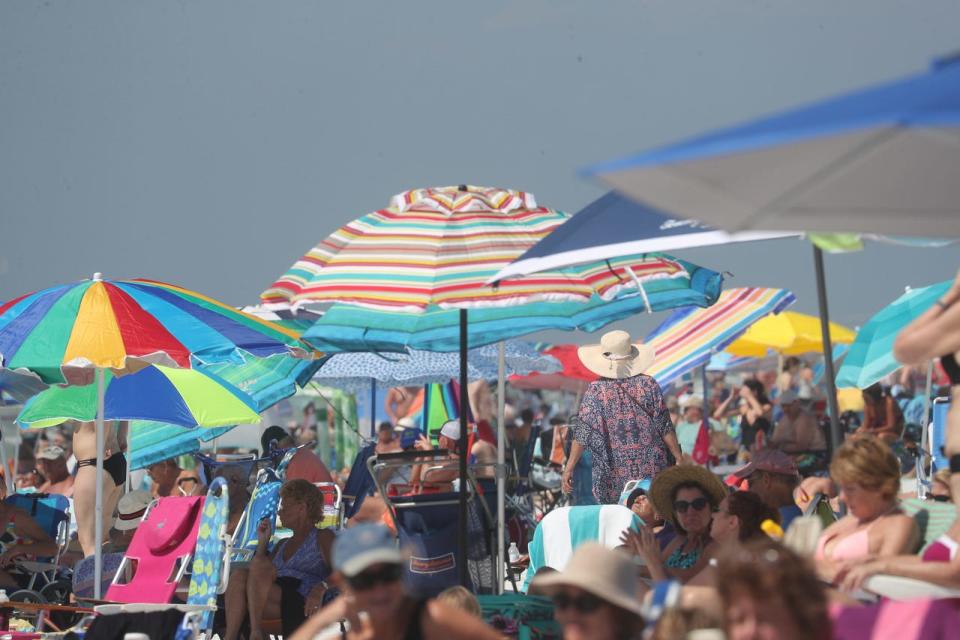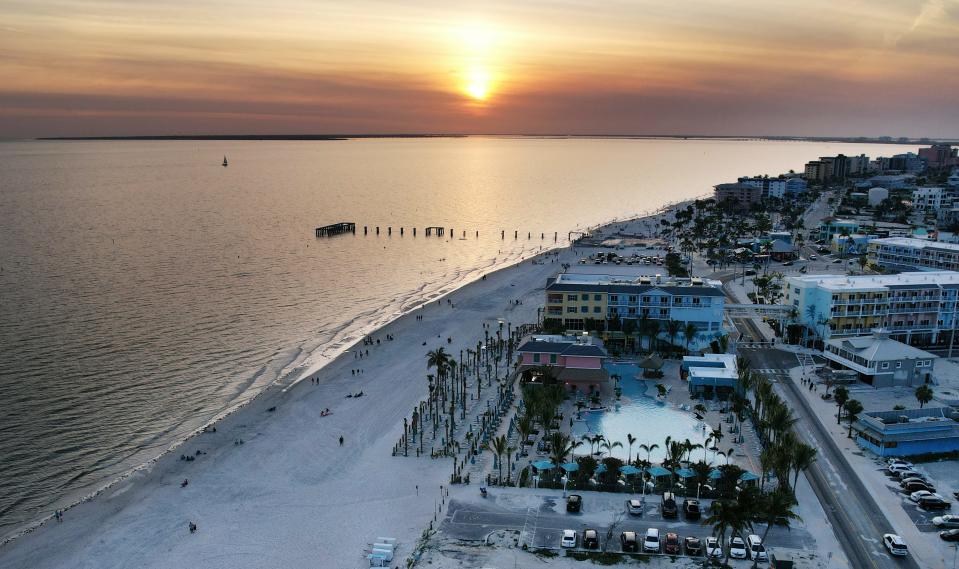Summer's already here for SWFL. What to know about warm Gulf, daily highs, algae
Early May is often when coastal waters are their clearest in Southwest Florida, and this year is no different as calmer seas have arrived for the summer months.
That means no more cold fronts from the mainland and strong northwest winds that blow for days.
Instead, we'll see humidity levels rise and the afternoon sea breeze form as we get into the summer rainy season, which should start later this month.

So let's take a look at all the factors that go into a coastal water quality and what you're likely to see and feel at the beach over the next six months or so.
Temperatures already above average for May
No need to wait for this summer: it's already hot.
Daily highs have been in the lower 90s, and that's what we'll see across Southwest Florida over the next few days, according to Christianne Pearce, a meteorologist with the National Weather Service.
"It is a little above average right now," she said. "The average for Fort Myers is like 86, so we're a little above for this time of year."
Humidity is the next part of the equation that will kick in soon.

"The more humid it is, the warmer the temperature is going to feel like. obviously," she said. "It's going to be a little more humid along the coast because there's water but to counteract that you have the sea breeze that helps it feel cooler. Directly on the coastline the sea breeze keeps it a couple of degrees cooler."
Pearce said the daily sea breeze pattern has already started.
"We're seeing that every day," Pearce said. "Our breeze has been out of the southeast, but it will switch around to the west in the afternoon and that's what we see during summertime."
Gulf of Mexico temperatures already warm
Gulf of Mexico temperatures are already near record levels for this time of year, according to seatemperature.info, at 82.9 degrees.
The all-time high for water temperature off Fort Myers Beach for a May 9 is 82.9 (2021).
More: Active hurricane season ahead: Lee public safety director talks about being prepared
The warmer waters now could mean bathtub-like conditions later this summer for the Gulf of Mexico.
Those warmer waters are also one reason why hurricane forecasters are calling for an above-average season this year.
How's the algae?
There are two major algae outbreaks that can wreck summer months here: blue-green algae from the freshwater systems and red tide in the Gulf of Mexico.
Both are considered "harmful algae blooms" and can be deadly to marine life, pets and livestock while potentially making people sick.
More: DOH issues blue-green algae advisory for Caloosahatchee River. Where else are blooms?
They produce airborne toxins that can wreak havoc on the human respiratory system, as happened to many people during a strong outbreak in 2018.
Blue-green algae has been reported in the Caloosahatchee River and Lake Okeechobee already this year, and warmer waters generally increase the chances of a blue-green outbreak.
The Florida Department of Health has issued health advisories this year for parts of the river.
Will we see seaweed?
Yes, there will be some seaweed on local beaches this summer. Natural, healthy beaches have seaweed on them on a regular basis.
But we won't likely see the massive sargassum mats that blanket other areas of Florida, according to scientists and experts.
Currents along the Southwest Florida coast keep most of the seaweed well offshore, which is where the hatchling sea turtles will go later this year for cover and food.
Long-term forecast calls for above-average highs
The National Oceanic and Atmospheric Administration, or NOAA, makes weather predictions several months into the future based off current trends and patterns.
NOAA's 90-day outlook currently calls for above-average temperatures for Southwest Florida between now and August.
More: Massive sea turtles coming to nest at a SW Florida beach near you. What to know
The same report says there are equal chances of above-average or below-average rainfall this summer, likely due to La Nina conditions.
"We are in neutral now and will move into La Nina by June," Pearce said.
La Nina can lead to drier conditions during the summer, but the big impact will be with tropical storm and hurricane formation.
La Nina reduces wind shear over the Atlantic Ocean and Gulf of Mexico, and that makes conditions more favorable for tropical formation, including hurricanes.
This article originally appeared on Fort Myers News-Press: Summer heat already here, higher humidity on its way. What to know

